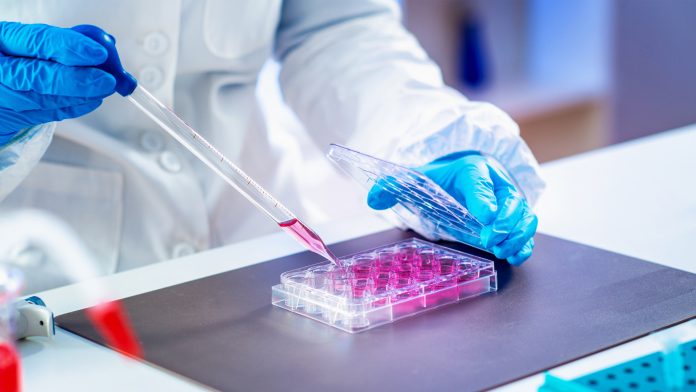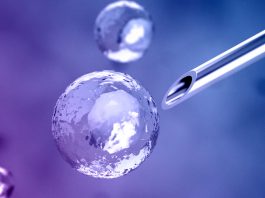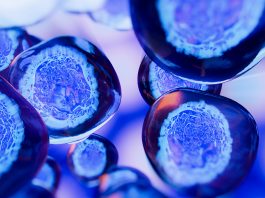Scientists have successfully reproduced mammalian life through a novel in vitro procedure that utilises stem cell technology, a development that may generate a plethora of medical solutions.
The team, comprised of Christine and Bernard Thisse from the University of Virginia School of Medicine, have efficaciously recreated a tiny mouse embryo using the mammal’s embryonic stem cells – the most sophisticated model ever created – a monumental milestone in the evolution of stem cell technology.
The revolutionary model has a heartbeat, muscles, a gut, blood vessels, and a nervous system and its discovery may potentially assist in understanding mammalian development, creating new drugs, battle diseases, and possibly even generate organs and tissues for human transplantation.
Christine Thisse, PhD, of UVA’s Department of Cell Biology, said: “We found a way to instruct aggregates of stem cells to initiate embryonic development. In response to this controlled instruction, the aggregates develop into embryo-like entities in a process that recapitulate the embryonic steps one by one. What is amazing is that we can get the variety of tissues that are present in an authentic mouse embryo.”
Bernard Thisse, PhD, who is also part of the Department of Cell Biology, noted the significance of the advance: “Human organs are made of multiple cell types that originate from different parts of the growing embryo,” he said. “The gut, for example, is made from cells that form a hollow tube. Models of this tube in a dish have been made and are called gut organoids.
“However, this tube is not enough to make a functional gut because this organ contains other components, such as smooth muscles, blood vessels and nerves that control the function of the gut and which are made from cells of different origins. The only way to have all the variety of cells necessary to the formation of functional organs is to develop systems in which all precursor cells are present. The embryo-like entities we have engineered using stem cells are providing just this.”
The potential of stem cell technology
Stem cells have the propensity to modify into other types of cells with special functions; for example, stem cells develop into some of our most vital bodily features, such as our brain, heart, bones, and nerves. Despite extensive efforts, fabricating sophisticated models with multiple cell types has proved to be an arduous endeavour, as producing a single cell in a lab is incomparably easier than developing an intricately complicated organism as it does in nature.
The in vitro model created by the researchers is the first mammalian embryo to be built with a considerable number of tissues from stem cell technology, with the anatomy of the mouse organised as it should be – around the vertebrate animal defining notochord.
To achieve this outstanding feat, the researchers had to bypass some of the considerable obstacles in stem cell technology, such as prior attempts failing to attain the correct structure of the model, not developing correctly, or a litany of other issues. Due to their previous experience working with cells from fish embryos, their expertise in developmental biology overcame these difficulties. In the Thisses’ model, the notochord, digestive tract, beating heart, and nervous system forming a neural tube are all present.
“This in vitro mouse model shows that we are able to induce cells to execute complex developmental programs in the right succession of steps. Having all the variety of tissues made allows us to hope that the scientific community will be able to build organs with a proper vascularisation, innervation and interactions with other tissues,” Christine Thisse said. “This is essential to be able one day to produce functional human replacement organs in a dish. This would overcome the shortage of organs for transplants.”
Future developments
Despite this marking a significant milestone in stem cell technology, there are still significant challenges to overcome. Currently, the mouse model is absent of crucial characteristics; for example, the anterior portion of the brain, meaning that the embryo development has been stopped at what would be the middle period of gestation. Nevertheless, developing sophisticated, embryonic-like structures of mammalian life has provided scientists with more comprehensive stem cell technology than ever before and may one day be looked back upon as the turning point in medical technology.
“The embryoids we are currently producing lack the anterior brain domains,” Bernard Thisse said. “However, with the techniques we have developed, we should be able, at some point, to manipulate molecular signals that control embryo formation, and this should lead generating embryo-like entities containing all tissues and organs including the anterior brain.”
“The knowledge we acquired along all our career of developmental biologists served as a starting point for this study in the stem cell field,” Christine Thisse said. “This was a big jump for us, but it shows that if you have a solid idea, it can be used to cross barriers and can be developed for other purposes. I say that for students: Nothing is definitive; there is room for knowing more and for solving problems.”
“Watching an embryo develop is a marvellous thing to behold,” she added. “I am lucky my work led me to contribute to the knowledge of how invertebrate and vertebrate embryos develop, and that using these principles, we were able to produce embryo formation in a dish using stem cells as building bricks.”









